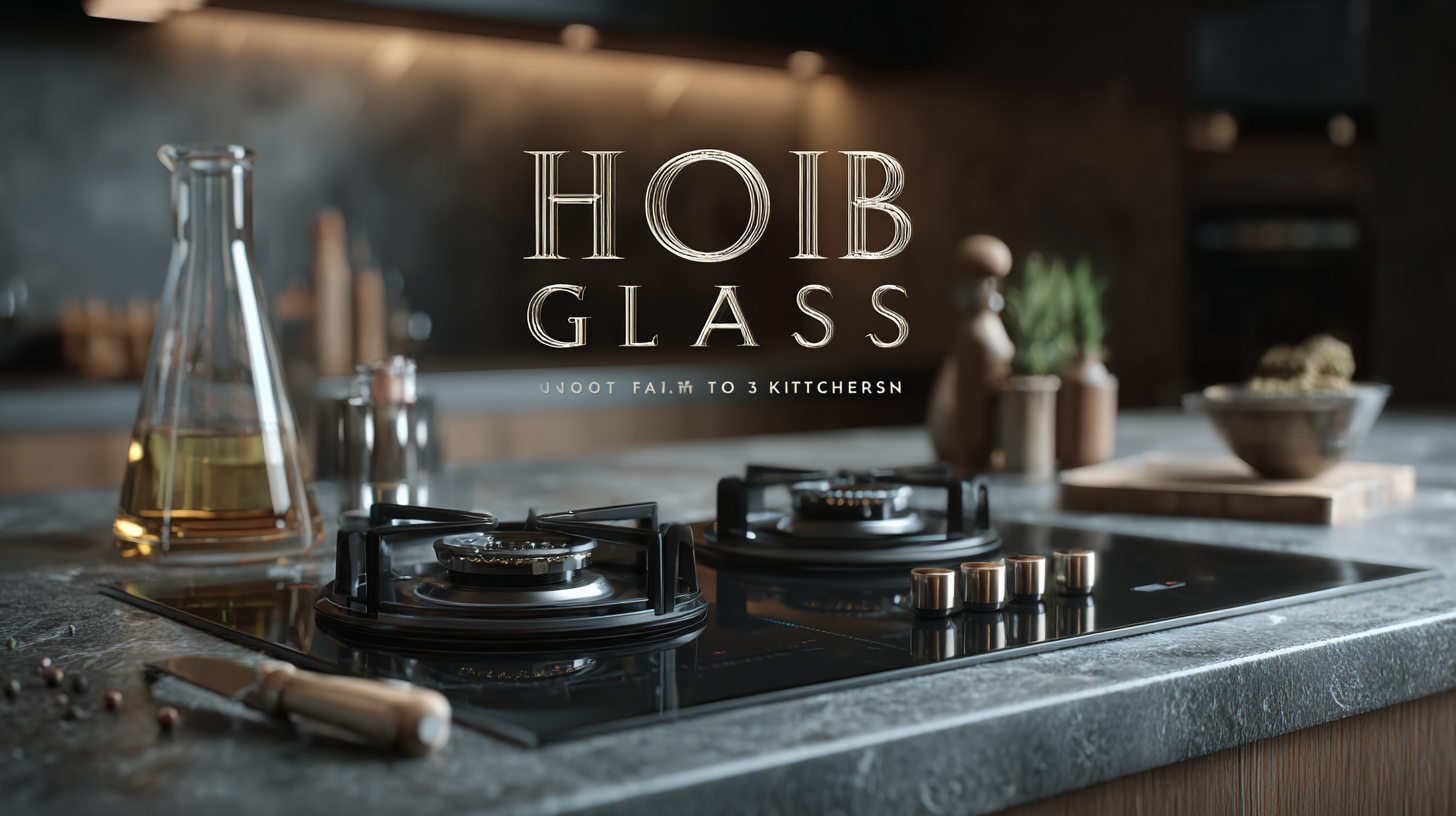
In the realm of modern kitchen design, the integration of Hob Glass has emerged as a pivotal element that not only elevates aesthetic appeal but also enhances functionality. According to a recent report from the Kitchen & Bath Industry Association, approximately 65% of homeowners prioritize stylish surfaces that are also easy to maintain when selecting kitchen appliances. Hob Glass, characterized by its sleek, smooth surface, not only complements contemporary interior themes but also boasts superior heat resistance and durability, making it an ideal choice for busy kitchens. Furthermore, research indicates that kitchens equipped with high-quality materials like Hob Glass can increase the overall property value by up to 20%. As culinary spaces evolve into multifunctional hubs, understanding the advantages of Hob Glass becomes essential for homeowners and designers alike, paving the way for innovative and stylish cooking experiences.

The integration of hob glass in modern kitchen designs has become a global trend, driven by both aesthetic appeal and functional advantages. According to a recent report by Grand View Research, the global kitchen glass market is projected to grow at a CAGR of 6.2% from 2021 to 2028, highlighting the increasing consumer preference for sleek and stylish options in kitchen appliances. This material not only enhances the visual appeal of kitchens but also offers improved durability and heat resistance, making it a favored choice among designers and homeowners alike. Moreover, the versatility of hob glass allows it to seamlessly blend with various kitchen styles, from contemporary to minimalist. A survey conducted by the National Kitchen and Bath Association found that over 40% of homeowners are opting for glass surfaces in their kitchen remodels, citing easy maintenance and cleanliness as key factors influencing their decision. As kitchens evolve into multifunctional spaces, the rise of hob glass reflects a broader shift towards modern design solutions that prioritize both beauty and practicality, setting a new standard for kitchen aesthetics worldwide.
In modern kitchens, the choice of hob glass plays a crucial role in both aesthetics and functionality. High-quality hob glass should possess key features such as heat resistance and durability, ensuring it can withstand the rigors of daily cooking. Innovations in this area have led to the development of tempered glass options that not only resist scratches and stains but also provide a sleek, contemporary look that complements various kitchen designs.
When selecting hob glass, look for features like easy maintenance and safety standards. A seamless surface can simplify cleaning, while safety enhancements such as shatter resistance add peace of mind. As consumer expectations rise, the demand for superior durability and style is reshaping the kitchenware landscape. Brands are focusing on creating products that mix functionality with modern design, helping homeowners achieve their dream culinary space.
When it comes to modern kitchen design, one pivotal component is the hob glass. Its durability and safety are of utmost importance, as it directly impacts user experience and kitchen aesthetics. According to the National Association of Home Builders, modern hob glass is engineered to withstand heat resistance of up to 300°C, ensuring it remains intact even under extreme cooking conditions. This resilience not only enhances longevity but also minimizes the risk of accidental breakage, which is crucial for families with children.
Moreover, safety standards in the hob glass industry are governed by strict regulatory metrics. The European Standard EN 12150-1 specifies the performance requirements for thermally toughened glass, which includes impact resistance, thermal stability, and safety in case of breakage. Studies indicate that toughened hob glass is five to seven times stronger than standard glass, significantly reducing the risk of injury in a kitchen environment. Overall, investing in high-quality hob glass that meets these industry metrics is essential for ensuring both safety and performance in contemporary kitchens.
When it comes to modern kitchens, the choice of cooking surfaces can significantly impact both functionality and aesthetics. One of the key comparisons is between hob glass and traditional cooktop surfaces. Hob glass offers a sleek, contemporary look that not only enhances the overall design of the kitchen but also provides a host of practical advantages. Its smooth, non-porous surface is easy to clean, resisting stains and spills that can often mar traditional cooktops. This aspect makes hob glass particularly appealing for busy kitchens where efficiency is paramount.

Moreover, hob glass is designed to withstand high temperatures while maintaining durability, ensuring it can handle the demands of daily cooking. In contrast, traditional cooktop surfaces may require more maintenance and can degrade over time due to exposure to heat and spills. The comparative analysis between these materials reveals that hob glass not only meets modern aesthetic preferences but also offers superior functionality, making it an ideal choice for those looking to upgrade their cooking experience.
As the kitchen evolves into a space for both culinary creativity and gathering, the choice of cooktop becomes more crucial in achieving a harmonious blend of beauty and practicality.
Sustainability in manufacturing is becoming a cornerstone of modern economies, with China leading the charge in eco-friendly hob glass production. Recent advancements highlight the country’s innovative approaches to integrating renewable materials, akin to practices seen in green architecture, where organic resources such as bamboo and hemp are gaining traction. The burgeoning emphasis on sustainable practices is reflected in the glass industry, where manufacturers are adopting techniques that not only reduce carbon footprints but also leverage recycled materials, contributing to a significant decrease in waste generation.

According to a 2024 market report, the North American food service equipment sector anticipates a growth rate of 3.2% from 2025 onwards, fueled by a rising demand for sustainable kitchen solutions. This trend aligns with the increased importance placed on eco-friendly materials in modern kitchens. The shift towards sustainable hob glass not only addresses environmental concerns but also supports the health of local ecosystems.
For instance, the upcycling of by-products into sustainable composite materials is an innovative step towards creating energy-efficient products that align with consumer expectations for environmentally responsible options. Through such initiatives, China's role in promoting sustainable practices within the hob glass industry can serve as a model for others aiming to achieve similar environmental goals.